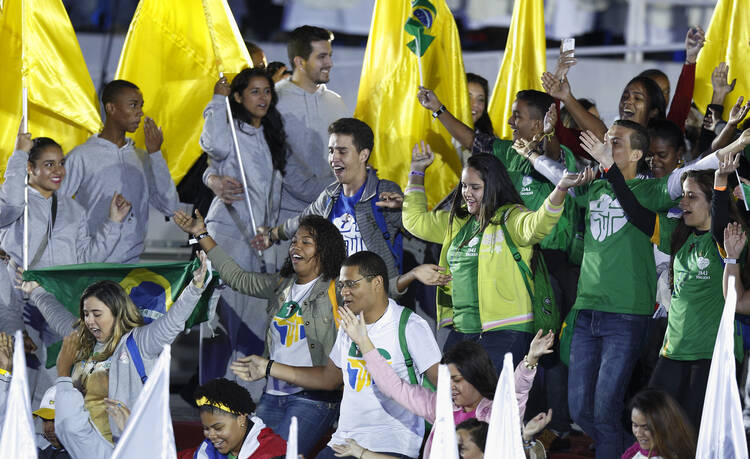More than 10 years ago America published an article I wrote entitled “Shall We Dance." The question that I raised in the piece was whether we as a people of God would respond to the invitation to “Praise God’s Name in the Festive Dance” (Ps 149:3). When I saw millions of people including bishops and priests joining in a simple but lively dance at the closing liturgy of World Youth Day, I received an answer.
As a Jesuit priest, trained dancer and choreographer who for more than 40 years has been exploring the power and beauty of dance as a very human form of prayer, praise and worship, I was moved to tears and laughter when I saw so many people responding to the call to praise God with “timbrel and dance” (Ps 150:4). I was particularly moved to see many bishops enjoying themselves as they were taught the dance.
The criticism that we hear of using dance in a religious context is that dance in Western Civilization is only used for “courtship” or “entertainment.” Yet this argument fails to acknowledge the wonderful tradition of “folk” dance in Western culture. These are the dances that are usually very simple, where people join together to express their joy and the beauty of human community. We saw a wonderful example of such a dance of the “folk” on Copacabana beach last week. It seemed that the Holy Spirit was “taking the lead.”
Robert VerEecke S.J., is pastor of St Ignatius Church in Chestnut HIll, Ma., and a Jesuit artist-in-residence at Boston College.








